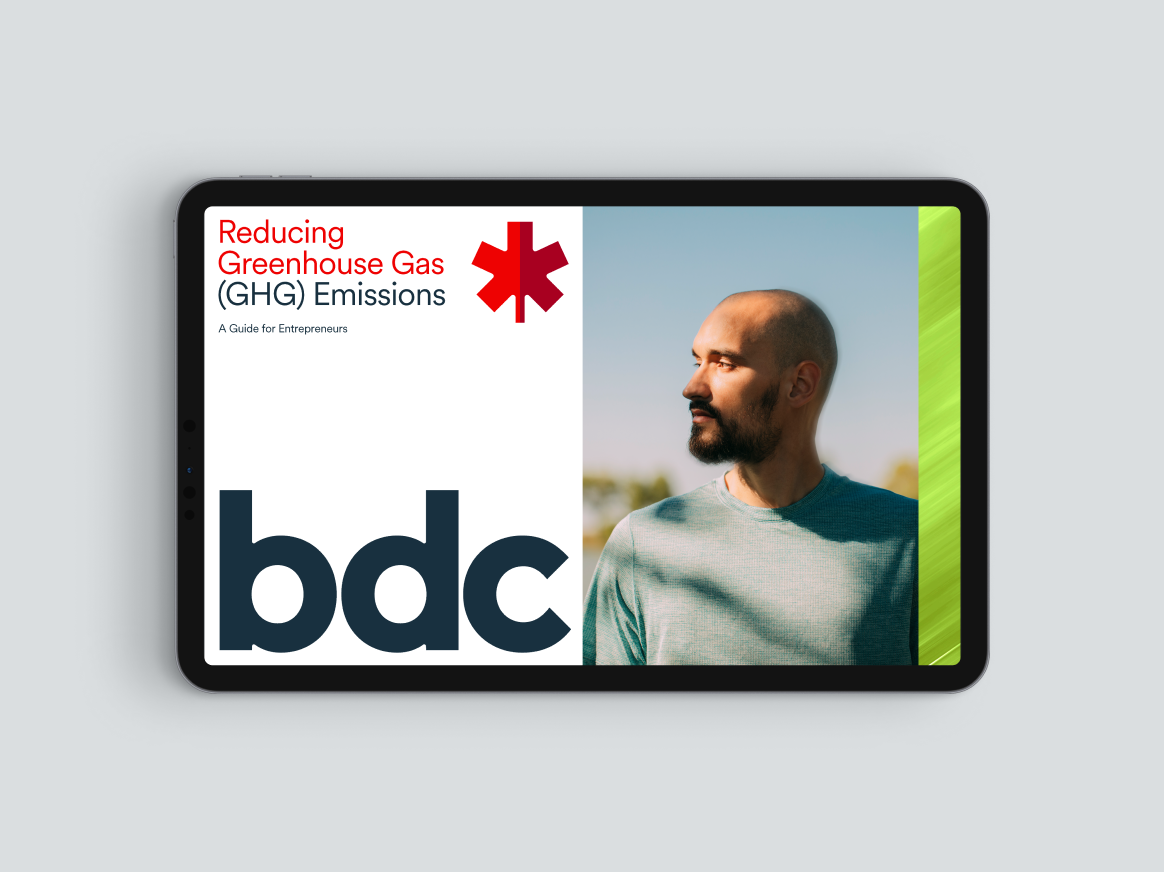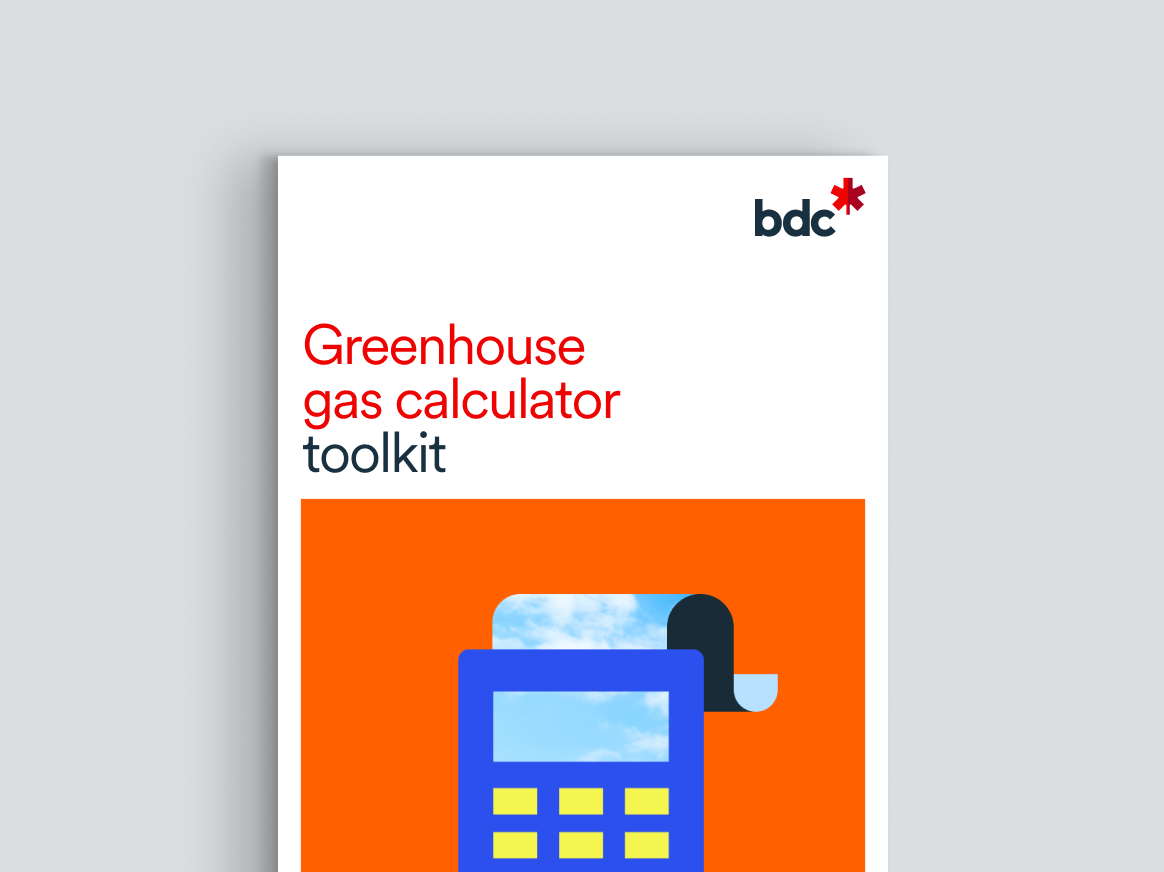Take metrics, set goals
On average, SMEs that integrated climate considerations into their business strategy took 15 months to recoup their investment.
Roadmap to building a climate strategy
It’s critical to get a picture of your current carbon footprint. This means you should evaluate your activities and assets to determine how much GHG emissions each one produces. Calculating your GHG emissions as well as auditing your waste or energy will help you to get a sense of where to start your journey. This is also a perfect time to write a clear statement of why climate action is important for your company.
-
Create a carbon strategy to gain a competitive advantage
Learn what you can do to take a leadership role in the fight against climate change and carve out a competitive advantage for your business.
-
How to write a strategic plan
Learn about the strategic planning process to guide your business in its long-term goals.
The next step is to set a company-wide action plan to help you reach your carbon reduction goals. Consider what are your risks, opportunities and barriers to success. Your action plan should include:
- A manageable list of impactful projects
- A timeline for achieving each one
- The employee responsible for each project
- The metrics to gauge your progress (milestones and key performance indicators)
- A dashboard to monitor progress
Also, let your stakeholders (employees, supply chain, shareholders, clients) know about your ambitions. It’s key to raise awareness among your workforce, as your employees are your biggest ambassadors and will be key players in rolling out your action plan.
-
7 steps to create an action plan
Your strategic plan needs an action plan to lay out the next steps. Here are seven simple steps you can follow.
-
Five benefits of environmentally-friendly business practices
Environmentally-friendly business practices help future-proof your business, maximize your output and inspire your stakeholders. Discover five benefits of environmentally-friendly business practices.
-
SMART objectives
SMART objectives help you determine where you want to get to and help you communicate that goal to your employees.
Continue to communicate and engage your stakeholders to make them aware of your achievements, best practices and new goals. Also, collaborate with other organizations and spread the word about how you’re taking the lead on fighting climate change.
It’s easy to start with high ambitions and get waylaid by day-to-day pressures. That’s why regular check-ins and a dashboard are essential for monitoring progress, resolve problems and taking corrective actions. Your climate dashboard is where you can track KPIs and set improvement targets. Problems will crop up so it’s important to remain agile and flexible.
-
CRA Canada: Sustainability is good business
Explore resources to discover how organizations focusing on sustainability can successfully balance bottom-line results with other key factors, including impacts on society and the environment
-
5 tips on implementing your strategic plan
Knowing how to implement a plan is crucial to a business. Follow these steps to ensure your plan gets implemented.
-
How to use dashboards to boost performance
Discover how to use dashboards to transform your data into meaningful action that will boost your performance.
Recommended resources

Discover over 60 green governmental active grants, tax credits and loan programs.

Reducing your GHG emissions is a smart move for both your business and the planet. Discover the key areas in your business where you can take action now.

Use this free toolkit to estimate your footprint and identify where to take meaningful action.
Discover our solutions
The content of this webpage is provided for information purposes only, and the reader is responsible for any decisions resulting from its use. The results of applying the content are not guaranteed by BDC and may vary depending on the context, market, sector, financial situation and size of the company. Content originating from a source outside of BDC is the sole responsibility of the author of that source.





